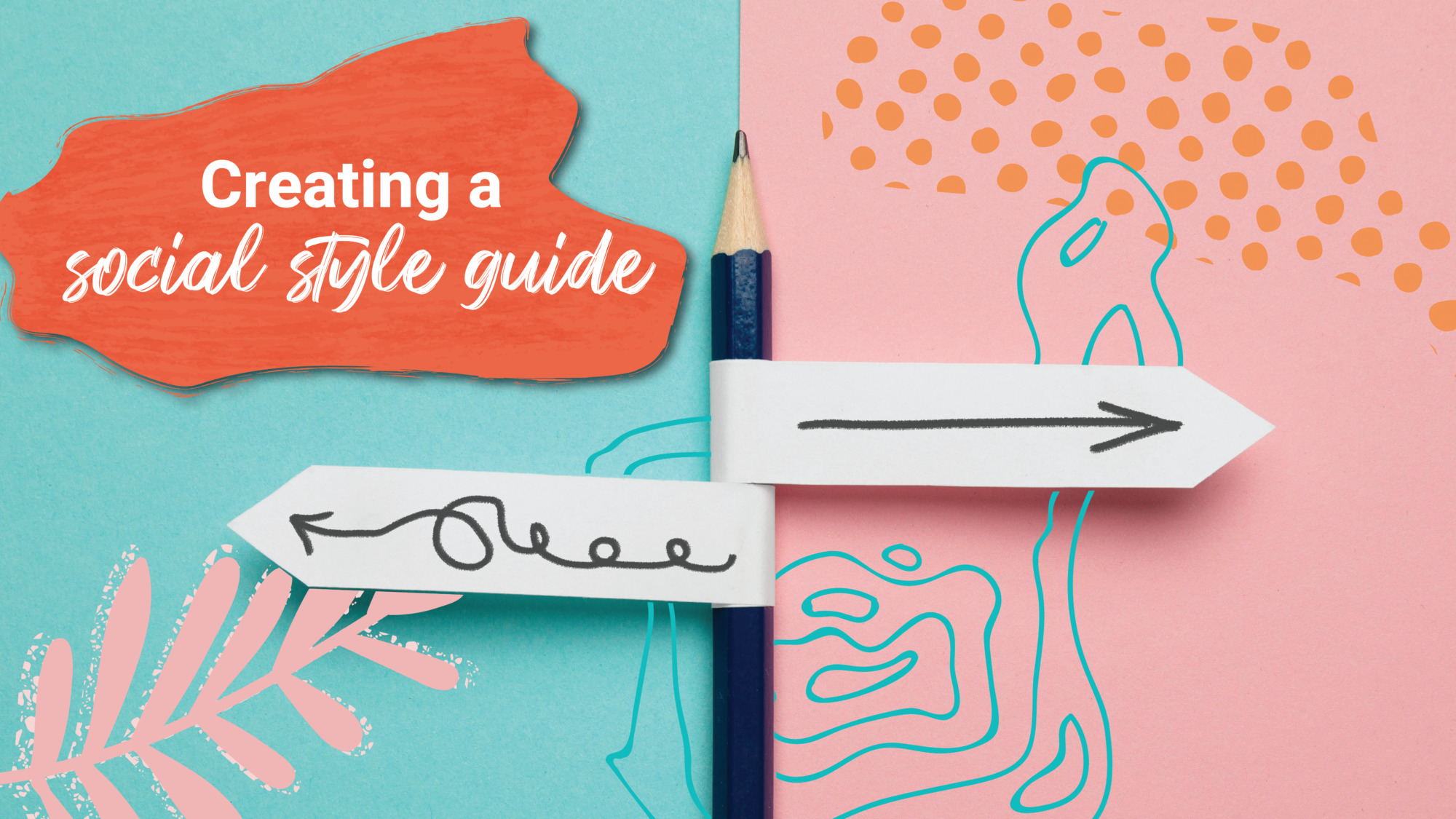Stop throwing shit against the wall to see what sticks, it ain’t a strategy (much like “ain’t” ain’t a word) and it’s making the rest of us social media managers look bad. Let’s talk about actual strategies for effective social media marketing. We’re gonna start with a social media style guide, we have these for all of our clients because it ensures all team members are on the same page with content type, tone and voice, frequency, goals, etc.
What is a Social Media Style Guide?
We’re so glad you asked. Unlike your social media strategy, which tells you what you want to achieve, your style guide tells you how you make those goals a reality. It’s every brand’s go-to source when it comes to tone, voice, words to use and avoid, inspiration, and more.
Social media style guides help social teams make ensure every single post sounds like it’s coming from one source—your brand—instead of the five or six or fifty people who are posting and comment on behalf of that brand.
Think of it this way: in PR, we use talking points. In design, we use brand guides. In social media, we use a style guide.
Parts of a Social Style Guide
Every social style guide is a little different, since no two brands are exactly the same. Still, we’ve found there are some key items that are almost always worth including in a guide. Those topics are:
- Accounts (with links) and their purposes
- Tone and voice
- Common types of content
- Guidelines for:
- Hashtags
- Capitalization and grammar
- Emojis
- Tagging
- Crediting
- Responses and comments
- Filters, stickers and sounds
- Words/phrases to avoid
- Good post examples
- Shitty post examples
- Brand inspiration
- Content sources
- News sites
- Approved influencers
- Approved photos
Accounts and Purpose
Sounds easy, right? Well, it is and it isn’t. This is where you list your social handles for each platform. We also typically include any social profiles our clients have used for the brand in the past but might not be using at the moment.
Once you have those, it’s time to go back to your social media strategy. What’s the purpose of having a Facebook account? How are you using that to engage with audiences? Is it to drive sales? Build brand awareness? Foster relationships? Just post fun content? It’s a quick reference for a social team to remind them why they’re sharing what they’re sharing and to make sure it’s in line with the strategy without having to break the whole thing out.
Tone and Voice
As a social media manager, you’re often overseeing 10 or more accounts at a time. It can be hard to switch between tone and voice, this is why we like to include examples of how the tone should sound and how it shouldn’t.
Guidelines
This is where the real meat of the guide lives. We’ve broken it down into a bunch of categories, so we’ll just give you a really high-level view of each one.
Hashtags
How many hashtags do you use? Does your brand use hashtags? This is also where you can list any hashtags that your team has researched or any branded or event-focused hashtags you use. We also like to make little notes about each hashtag so we know when and how to use it.
Capitalization and Grammar
Is your brand the type to write out “going to” or are you a “gonna” type of organization? Here’s where you talk about contractions, sentence structure, and all that. It should tie in with the tone and voice attributes, too. This is also where you discuss things like capitalization. Do you capitalize each word in a hashtag? Can you post in all lowercase letters? Define it here.
Emojis
Some brands love emojis. Some hate them. No matter where you fall on that scale, here’s where you document it. We also like to include any emojis that our clients use frequently, along with how and when they should be used.
Tagging
Define when, how, and how often to tag other people and organizations in your posts. Some clients will tag sponsors for an event in their own separate posts while others will post one big thank you post with all of them. Oh, and if there’s a photo involved, it’s good to note if the people and/or organizations involved should be tagged in that, too. While you’re at it, maybe tackle what to do if an organization doesn’t have an account to tag at all.
Crediting
We love user-generated content, and we’re sure your brand does, too. However, it’s important to engage those users (or even your professional photographer) by crediting them correctly. Here’s where you map it out.
Responses and Comments
Your brand should always sound the same, even when it’s responding to a really nasty comment. Here’s where you can map out guidelines for when and how to respond to comments, replies, and messages. It’s also a good place to include any sort of moderation you might need, like when to mute a user or block them. If you get the same comment all the time, this is also where you can include some suggested responses.
Filters, Stickers and Sounds
We live in the world of stories and reels. If your brand uses stickers, what sort of stickers are they? Is there a type of music that should be used or avoided in stories? Can you use filters on your images? Here’s where you define that.
Words and Phrases to Avoid
The comments section of social media is notoriously messy. Everyone just has to share their opinion. To help mitigate this, make a list of words and phrases that have repeatedly “triggered” your target audience. It can be as broad as “political opinions” to something more specific, like “Faux Fur”.
This also goes beyond just upsetting the masses. You also don’t want to mislead potential customers, so best to avoid language that might give off the wrong impression. Be transparent with your copy.
Good and Shitty Post Examples
We’re all guilty of it. Maybe you stumbled across a new phrase to avoid, or perhaps you scheduled a post in a hurry and didn’t get someone to review. Sometimes, you don’t even realize it’s a bad post until you take a look at the analytics. No matter the cause, it’s good practice to keep a running list of posts that underperform. Throw ‘em in your social style guide and write a brief analysis as to why it sucked.
On the other hand, sometimes it all goes to plan. When you’ve got a post that really moves the needle, take a screenshot and write a brief summary explaining how awesome you are at your job. You did it—take the credit.
Brand Inspiration
It’s difficult pulling posts out of thin air. You’ve exhausted all options but still have a few posts to go, so now what? Take a peak at similar brands and see what they’re doing. More often than not, you’ll find some inspiration. Review their content and see what performs well and what doesn’t. It’s a good habit to have a running list of competitors to monitor and (we’ll say it) emulate.
The social guide is meant to be your lifeline. Refer back to it, update it constantly and make sure to review with your team.









